US Prefabricated Buildings Market Size
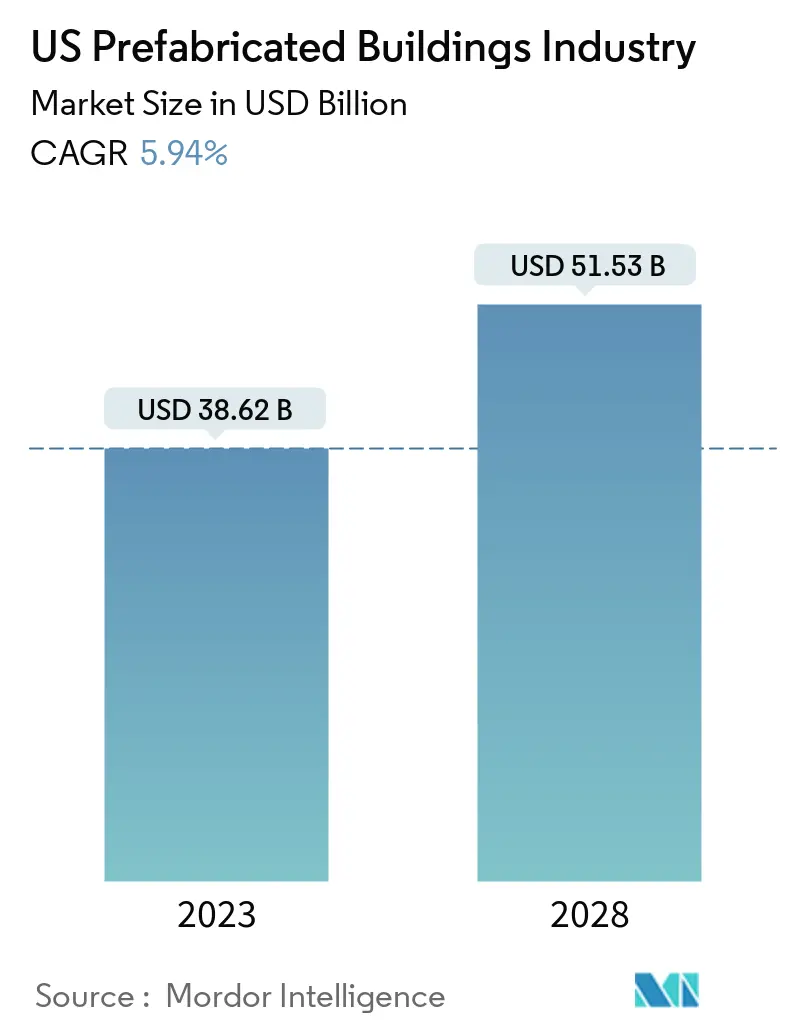
| Study Period | 2019 - 2028 |
| Base Year For Estimation | 2021 |
| Market Size (2023) | USD 38.62 Billion |
| Market Size (2028) | USD 51.53 Billion |
| CAGR (2023 - 2028) | 5.94 % |
| Market Concentration | Medium |
Major Players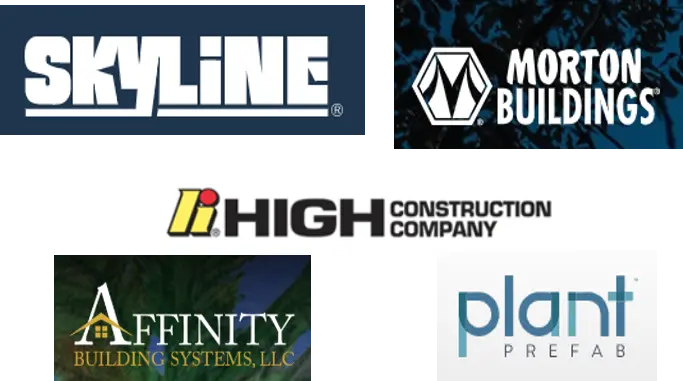
*Disclaimer: Major Players sorted in no particular order |
Need a report that reflects how COVID-19 has impacted this market and its growth?
US Prefabricated Buildings Market Analysis
The US Prefabricated Buildings Industry is expected to grow from USD 38.62 billion in 2023 to USD 51.53 billion by 2028, at a CAGR of 5.94% during the forecast period (2023-2028).
The prefabricated building industry had witnessed a steady growth during the review period and has generated a revenue of USD 39.6 billion in the year 2019, a 10% increase in the revenue generated from that of in the year 2016. Modular construction in the United States has grown significantly. It is estimated to double in size over the past five years. The increased productivity and lower costs are the driving factors to embrace modular construction.
Manufactured housing is a large segment with high demand in the US prefabrication construction market. The prefabrication market in the country is also witnessing demand from prefabricated housing types, including panelized, pre-cut, The drive to make housing more affordable, especially in the high-demand areas, like the San Francisco Bay area, encourages the developers to move toward the prefabrication solutions.
The prefabrication of multifamily buildings is still in its infancy in the United States. Most of the prefabricated multifamily buildings consist of wood-framed units that evolved from the products made by the manufacturers of single-family, mobile, and modular homes. Until recently, few steel modular experiments were undertaken. A Seattle company, Blokable, built its first steel units at its factory in Vancouver, Washington, for a 24-unit project in Edmunds, Washington. The preference toward the manufactured home solutions in the United states has been witnessing continuous growth, as this serves as the cost-effective alternative for conventional constructions methods. This increasing preference is increasing the demand for manufactured homes resulting in an increase in price in the country and modular housing.
US Prefabricated Buildings Market Trends
This section covers the major market trends shaping the US Prefabricated Buildings Market according to our research experts:
The Trend of BIM in the Prefab Sector
According to an industry report on the advantages of BIM in the prefab and modular construction, in the prefab industry, around 22% of the companies not using BIM claim that they experience schedule performance improvement whereas the companies that use BIM in more than half of their projects, a significant 61% claim improvement in the performance. On similar lines, with modular construction, only 21% of non-BIM users cite cost-performance improvement whereas 46% of the BIM users report cost-performance improvement. An increase in project quality, a decrease in the construction costs, and improvement in the project schedule performance are the three main benefits of using BIM. The use of BIM is increasingly seen common in commercial and institutional projects in the USA.
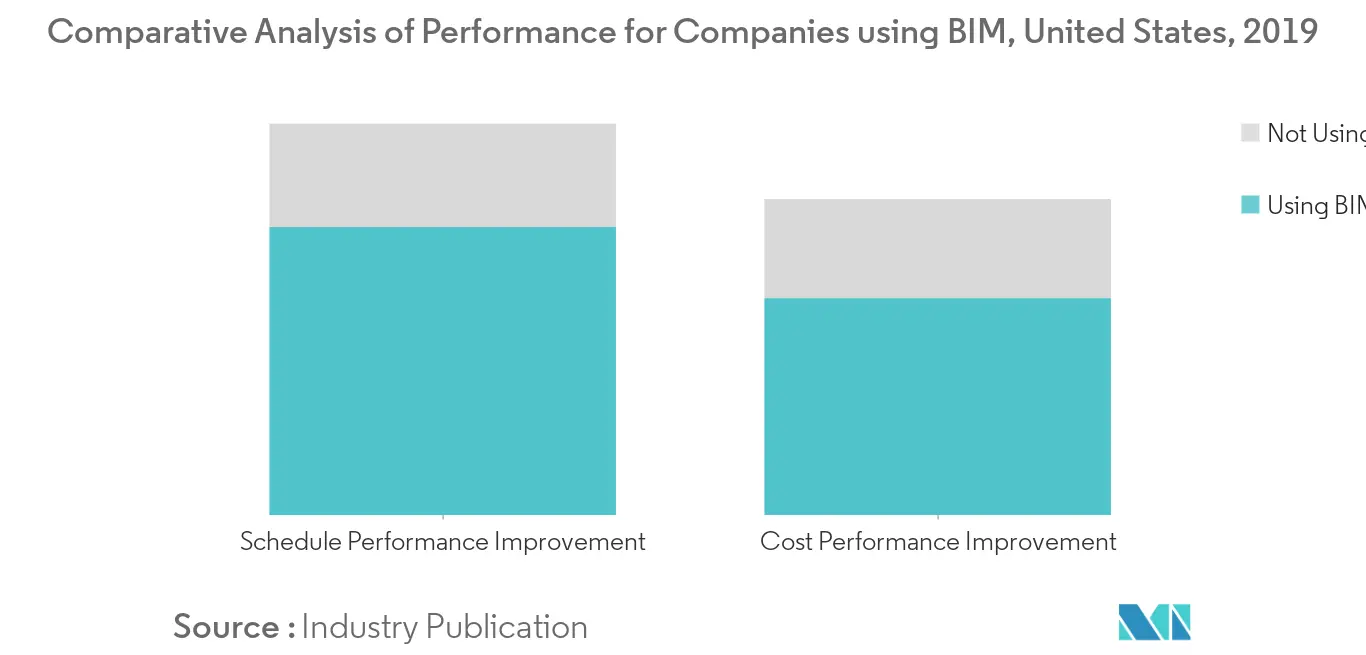
Growth in Residential & Non-Residential Sector to Boost the Prefab Share in the Market
Modular construction technology has been gaining more attention in the building industry over the last few years in the USA. Faced with rising housing costs, cities are beginning to invest in the modular and prefab construction to deliver multifamily residential developments. There were approximately 1.29 million new privately-owned housing units starts in the United States in 2019. This number has seen a rise in the past few years continuously owing to the demand for housing.
Based on planned construction development over the next few years, non-residential construction put in place is expected to reach 590.4 billion U.S. dollars in 2023 in the United States. which includes segments like lodging, office, commercial, health care, and education. Non-residential construction will continue to improve if government spending continues to improve allowing communities to contribute more resources to infrastructure.
Within the non-residential building industry, the commercial building has experienced a comfortable growth over recent years. However, the construction industry faces challenges such as a shortage of skilled labor and rising material costs due to global trade wars. The modernization of a generally typically conservative industry will be important in the near future to support customer demands as well as to improve operation models.
Integrating sustainable building processes and features in projects as well as establishing technological advancements like building information modelling (BIM) will be essential for the future of the construction industry. The value of the new residential construction that is put in place in the U.S is projected to be around USD 600 billion by the year 2025.
With the increase in concern over the carbon emissions, green buildings concept is on a rise and prefab modular construction is expected to seen a much growth during the forecast period.
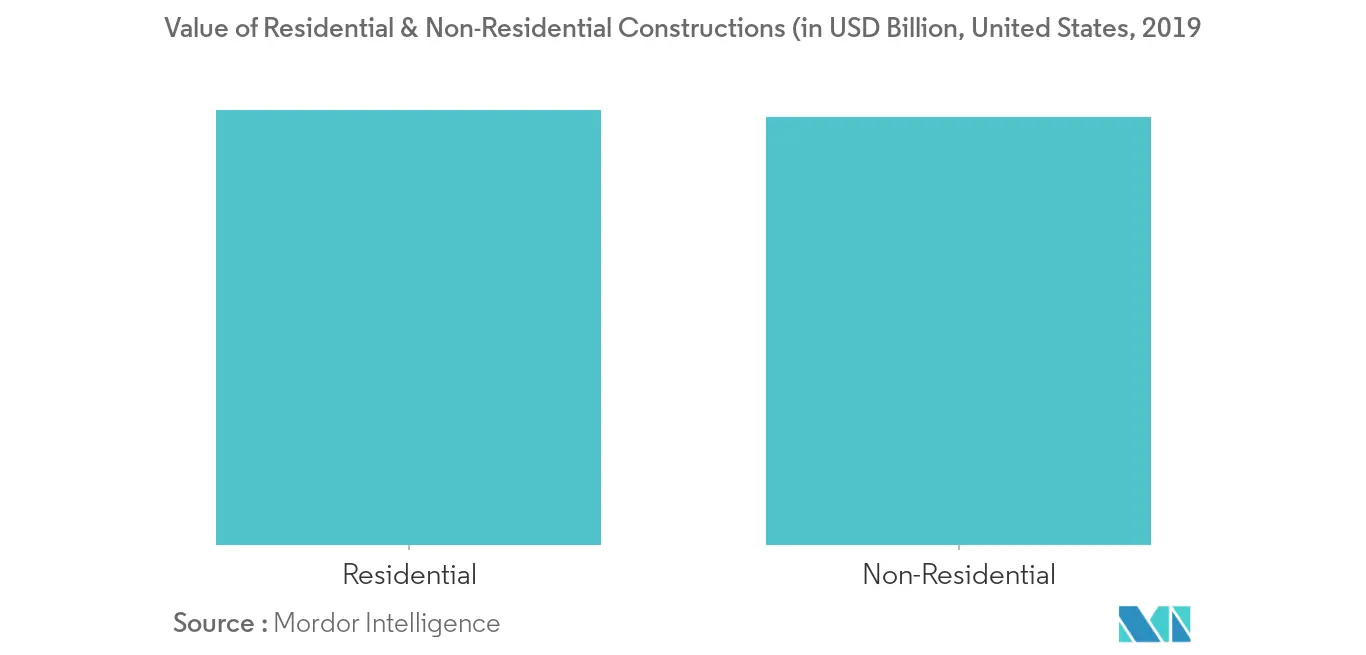
US Prefabricated Buildings Industry Overview
The report covers the major players operating in the USA Prefabricated Buildings Industry. The market is highly competitive with no major players. The market is fragmented, and the market is expected to grow during the forecast period due to the increase in the prefab construction building investments and up-coming major projects in the country and other few factors are driving the market. Major players in the market include Skyline Champion Corporation, Plant Prefab, Z Module, etc.
Prefabricated building systems and construction hold high potential to improve the efficiency and performance of the USA construction industry in a more sustainable sense. Venture Capital funding, along with experts from aerospace, semiconductor, and automotive manufacturing industries, is entering into the construction sector. With the market just opening-up among the building industry generating trust, with investments in the technology -R&D, the market is open to ample opportunities and can witness strong growth in the coming years.
US Prefabricated Buildings Market Leaders
Morton Buildings, Inc.
The High Construction Company
Skyline Champion Corporation
Affinity Building Systems
Plant Prefab
*Disclaimer: Major Players sorted in no particular order
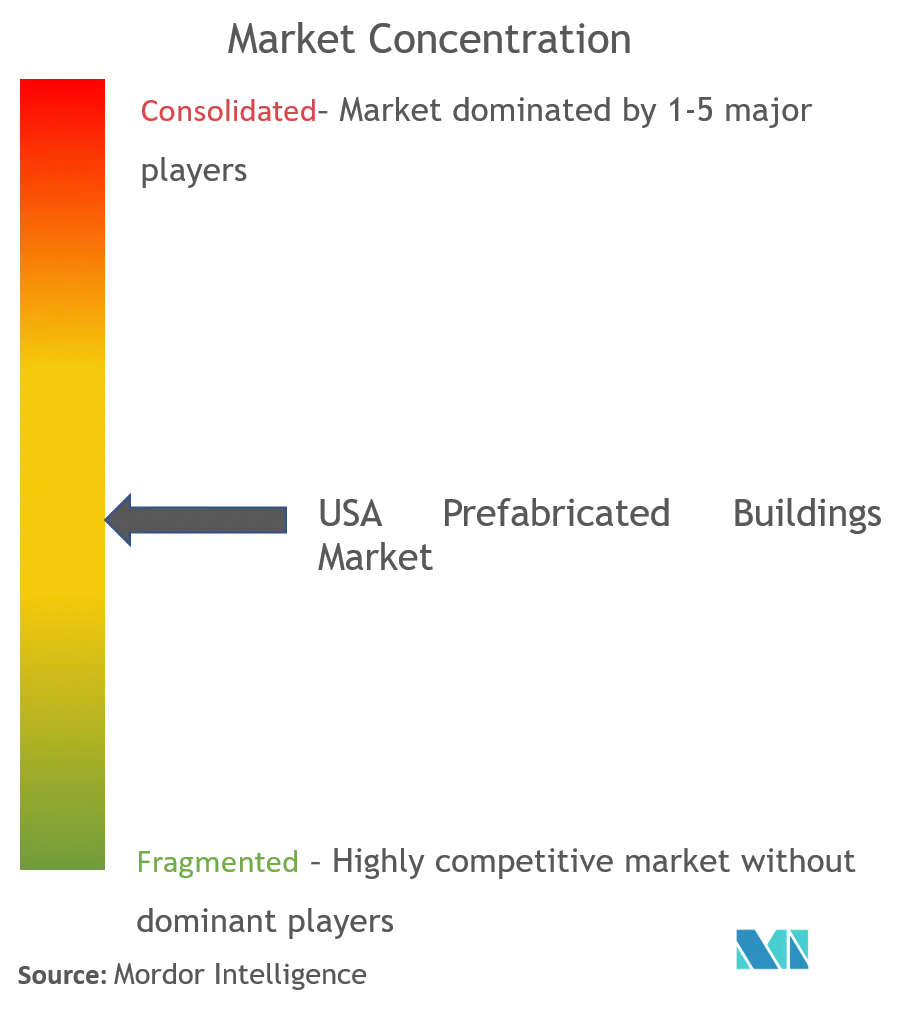
US Prefabricated Buildings Market Report - Table of Contents
-
1. INTRODUCTION
-
1.1 Study Assumptions and Market Definitions
-
1.2 Scope of the Study
-
-
2. RESEARCH METHODOLOGY
-
2.1 Analysis Methodology
-
2.2 Research Phases
-
-
3. EXECUTIVE SUMMARY
-
4. MARKET INSIGHTS
-
4.1 Current Market Scenario
-
4.2 Technological Trends
-
4.3 Insights on Supply Chain/Value Chain Analysis of the Prefabricated Buildings Industry
-
4.4 Brief on Different Structures Used in the Prefabricated Buildings Industry
-
4.5 Cost Structure Analysis of the Prefabricated Buildings Industry
-
4.6 Impact of COVID 19
-
-
5. MARKET DYNAMICS
-
5.1 Drivers
-
5.2 Restraints
-
5.3 Opportunitites
-
5.4 Porter's Five Forces Analysis
-
5.4.1 Bargaining Power of Suppliers
-
5.4.2 Bargaining Power of Consumers / Buyers
-
5.4.3 Threat of New Entrants
-
5.4.4 Threat of Substitute Products
-
5.4.5 Intensity of Competitive Rivalry
-
-
-
6. MARKET SEGMENTATION
-
6.1 Material Type
-
6.1.1 Concrete
-
6.1.2 Glass
-
6.1.3 Metal
-
6.1.4 Timber
-
6.1.5 Other Material Types
-
-
6.2 Application
-
6.2.1 Residential
-
6.2.2 Commercial
-
6.2.3 Other Applications ( Industrial, Institutional, and Infrastructure)
-
-
-
7. COMPETITIVE LANDSCAPE
-
7.1 Overview (Market Concentration and Major Players)
-
7.2 Company Profiles
-
7.2.1 Skyline Champion Corporation
-
7.2.2 Morton Buildings, Inc.
-
7.2.3 The High Construction Company
-
7.2.4 American Buildings Company
-
7.2.5 Z Modular
-
7.2.6 Affinity Building Systems
-
7.2.7 Varco Pruden
-
7.2.8 Westchester Modular Homes, Inc.
-
7.2.9 SG Modular
-
7.2.10 Plant Prefab
-
7.2.11 Homette Corporation *
-
- *List Not Exhaustive
-
-
8. MARKET OPPORTUNITIES AND FUTURE TRENDS
-
9. APPENDIX
-
9.1 Marcroeconomic Indicators (GDP breakdown by sector, Contribution of construction to economy, etc.)
-
9.2 Key Production , Consumption,Exports & import statistics of construction Materials
-
US Prefabricated Buildings Industry Segmentation
The USA Prefabricated Buildings Market covers the growing trends and projects in prefab building markets, like commercial construction, residential construction, industrial construction. The report also covers the industry along the type of material used, like concrete, timber, glass, metal, and other types. Along with the scope of the report also it analyses the key players and the competitive landscape in the USA Prefabricated Buildings Market. The impact of COVID’19 has also been incorporated and considered during the study.
| Material Type | |
| Concrete | |
| Glass | |
| Metal | |
| Timber | |
| Other Material Types |
| Application | |
| Residential | |
| Commercial | |
| Other Applications ( Industrial, Institutional, and Infrastructure) |
US Prefabricated Buildings Market Research FAQs
How big is the US Prefabricated Buildings Market?
The US Prefabricated Buildings Market size is expected to reach USD 38.62 billion in 2023 and grow at a CAGR of 5.94% to reach USD 51.53 billion by 2028.
What is the current US Prefabricated Buildings Market size?
In 2023, the US Prefabricated Buildings Market size is expected to reach USD 38.62 billion.
Who are the key players in US Prefabricated Buildings Market?
Morton Buildings, Inc., The High Construction Company, Skyline Champion Corporation, Affinity Building Systems and Plant Prefab are the major companies operating in the US Prefabricated Buildings Market.
United States Prefabricated Buildings Industry Report
Statistics for the 2023 United States Prefabricated Buildings market share, size and revenue growth rate, created by Mordor Intelligence™ Industry Reports. United States Prefabricated Buildings analysis includes a market forecast outlook to 2028 and historical overview. Get a sample of this industry analysis as a free report PDF download.
